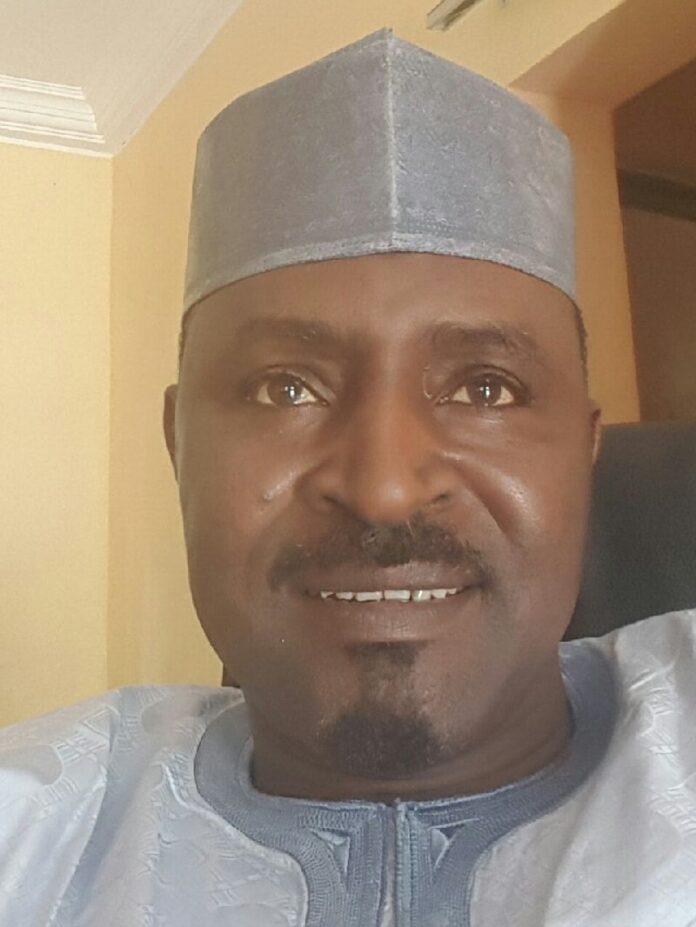Sasakawa Africa Association: Three decades of hunger eradication in Nigeria, by Prof. MK Othman
Deep Thoughts with Othman
Success is the best thing in life. Yes, nothing is more satisfying with utmost contentment and pleasure than achieving success in our various endeavours. Success is a product of chance (luck), meticulous plan, dedication, hard work, perseverance, effective coordination and efficient use of resources.
Except for chance, all other factors are within our control to make success a reality. The ability to harmonize and harness these factors to achieve success rests majorly on the leadership responsibility and responsiveness of the followers.
With good leaders and respectable followers in an enviable environment, success is just a matter of time. Colloquially, success is the first name of Sasakawa Africa Association (SAA), previously called Sasakawa Global 2000 (SAA/SG2000). The toga of success is highly attributable to SAA for its doggedness, and excellent performance in hunger eradication not only in Nigeria but also in ten other African countries in the last 35 years.
Glancing at the typical annual scorecard of SAA-Nigeria is not only amazing but astonishingly pleasant with superb over performance. In the last decade, the building capacity of 100,000 farmers for agricultural productivity enhancement has been the annual target of SAA-Nigeria but the result has consistently been in multiples of the set target.
For instance, in the most difficult year of 2020, the Covid-19 pandemic year, SAA-Nigeria achieved its target of 100,000 farmers in addition to 114,500 farmers in Kano under KSADP, 420,500 farmers in Kaduna and Niger states under the AGRA project. This made SAA-Nigeria score 635% achievement.
Agricultural development is the main focus of SAA in which the livelihoods of millions are daily being touched positively through purposeful thinking, strategic plan and effective implementation of the plan with the beneficiaries.
On 2nd December 2021, SAA celebrated 35 years of hunger eradication in African. SAA came to Nigeria in 1992, signifying 29 years of meritorious service to smallholder farmers. Therefore, the 35th-anniversary celebration in Abuja was used to reflect the mission of SAA in Africa and the reasons why despite the gargantuan success of SAA in Nigeria, hunger is still threatening the generality of citizens. How did SAA come to Africa?
African’s worst famine of the 1980s that hit about 20 countries with colossal loss of human dignity greatly shocked the World. The worst affected countries were those located in the Sub Sahara region. As a result of this tragedy/disaster, millions of aid Dollars flooded the continent. Mr Ryoichi Sasakawa, a notable philanthropist was the first to fly in food aid to Africa. Then, he was the Chairman of the Japanese Shipbuilding Industry Foundation (JSIF).
Mr Sasakawa was fully aware that flying in food items was only an immediate solution to the food crisis in Africa and the permanent solution is attacking the underlying causes of African’s food crisis, not just the symptoms. Being a Japanese billionaire, he was fully aware of the role that the high-yielding wheat and rice varieties and improved agronomic practices played in averting widespread famine in Asia during the 1960s and 1970s.
Therefore, his thinking was how to trigger a “green revolution in Africa” that could ensure three square meals on every dining table in Africa in a sustainable manner.
In 1984, Mr Sasakawa engaged the services of a renowned scientist, Mr Norman E. Borlaug, a Nobel Peace Prize winner who eventually became President, Sasakawa Africa Association, and Senior Consultant, Global 2000. At the same time, former U.S President Jimmy Carter, also deeply concerned about Africa’s food production crisis and looking for ways to help solve it, offered his collaboration and assistance, especially in the policymaking arena and mobilization of African Leaders, which was critical to overcoming the many problems plaguing agricultural development in Africa.
In January 1986, Mr Sasakawa, President Carter, Dr Leslie Swindale (Director-General of ICRISAT) and Mr Borlaug visited several African nations for discussions with government leaders about the prospects of establishing action-oriented, food crop technology transfer projects. They found strong interest in their proposals, which resulted in the launching of two agricultural development projects in Sudan and Ghana.
To manage these agricultural projects (along with other development projects, especially in primary health care), President Carter proposed the establishment of a non-profit organization, christened “Global 2000,” which became part of the Carter Presidential Center in Atlanta.
Consequently, the birth of SASAKAWA AFRICAN ASSOCIATION GLOBAL 2000 (SAA/SG 2000) was made. Then and even now, food production in most sub-Saharan countries has not kept pace with demand, as explosive population growth and declining soil fertility have overwhelmed traditional agricultural systems. Even though 70-85% of the people in most African countries are engaged in agriculture, most governments either have given agricultural and rural development a low priority or have pursued impractical idealistic developmental goals.
Investments in input delivery and grain marketing systems, in agricultural research, extension, and education have been woefully inadequate. Similarly, Agricultural policies have been inconsistently or poorly implemented, which have greatly distorted production incentives for farmers.
Over the last three decades, the SAA has been making waves in the development of Agriculture in the eleven African Countries with outstanding results. Nigeria, the most populous nation in Africa is one of the highest beneficiaries of the SAA projects. SAA-Nigeria officially started projects in Nigeria in 1992 by the formal signing of Memorandum of Understanding (MoU) with the Federal Ministry of Agriculture and Rural Development (FMARD) to work with Federal and State Agencies to raise agricultural productivity and improve food crop marketing.
The then Federal Department of Agriculture, Elder O. Edache, who later became the Permanent Secretary of the Ministry was among the principal actors who midwived SAA-Nigeria in 1992.
Providentially, Edache lived long enough to physically witness the 35th-anniversary celebration of SAA-Nigeria held on the 2nd December 2021. How many states and millions of farmers in Nigeria are benefiting from the SAA-Nigeria project? What is the modus operandi of SAA-Nigeria that make “success” its first name? To be concluded next week.
Prof Othman writes from NAERLS, ABU Zaria and can be reached via email: mkothman@gmail.com.
Follow the Neptune Prime channel on WhatsApp:
Do you have breaking news, interview request, opinion, suggestion, or want your event covered? Email us at neptuneprime2233@gmail.com





